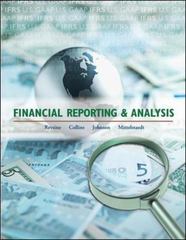Question
Part I.Case Exercise Problems on the demand for rides on STA. Answer Questions 1-3. Part II. Repeat the Problems in Part I using Logarithmic transformation.
Part I.Case Exercise Problems on the demand for rides on STA. Answer Questions 1-3.
Part II. Repeat the Problems in Part I using Logarithmic transformation. For example,
Ln y = 0 + 1ln X1 + 2ln X2 ... +
In this case, you can obtain general elasticities from is. So, Question 2 should be "Calculate the price elasticity of demand" and Question 3 should be "Calculate the income price elasticity of demand".
I have part one completed in the pictures attached but I am not sure how to completed part 2. Additionally, if possible, can part one be looked over to verify it was answered correctly?
The pictures include the table needed and my answers to the questions:
*If you cannot view the pictures I can send them to the tutor directly as a document as needed*
Below is the study and the questions that follow:
Demand estimation
Early in 1993, the Southeastern Transportation Authority (STA), a public agency responsible for serving the commuter rail transportation needs of a large Eastern city, was faced with rising operating deficits on its system. Also, because of a fiscal austerity program at both the federal and state levels, the hope of receiving additional subsidy support was slim.
The board of directors of STA asked the system manager to explore alternatives to alleviate the financial plight of the system. The first suggestion made by the manager was to institute a major cutback in service.This cutback would result in no service after 7:00 pm, no service on weekends, and a reduced schedule of service during the midday period Monday through Friday. The board of STA indicated that this alternative was not likely to be politically acceptable and could only be considered as a last resort
The board suggested that because it had been over five years since the last basic fare increase, a fare increase from the current level of $1 to a new level of $1.50 should be considered. Accordingly, the board ordered the manager to conduct a study of the likely impact of this proposed fare hike.
The system manager has collected data on important variables thought to have a significant impact on the demand for rides on STA.These data have been collected over the past 24 years and include the following variables:
- Price per ride (in cents) - This variable is designated P in Table 1.Price is expected to have a negative impact on the demand for rides on the system.
- Population in the metropolitan area serviced by STA - It is expected that this variable has a positive impact on the demand for rides on the System. This variable is designated T in Table 1
- Disposable per capita income - This variable was initially thought to have a positive impact on the demand for rides on STA This variable is designated I in Table 1
- Parking rate per hour in the downtown area (in cents) this variable is expected to have a positive impact on demand for rides on the STA.It is designated H in Table 1.
Questions:
- Using a multiple regression program available on a computer to which you have access, estimate the coefficients of the demand model for the data given in Table 1.
- Calculate the price elasticity using 1992 data
- Calculate the income elasticity using 1992 data


Step by Step Solution
There are 3 Steps involved in it
Step: 1

Get Instant Access to Expert-Tailored Solutions
See step-by-step solutions with expert insights and AI powered tools for academic success
Step: 2

Step: 3

Ace Your Homework with AI
Get the answers you need in no time with our AI-driven, step-by-step assistance
Get Started


